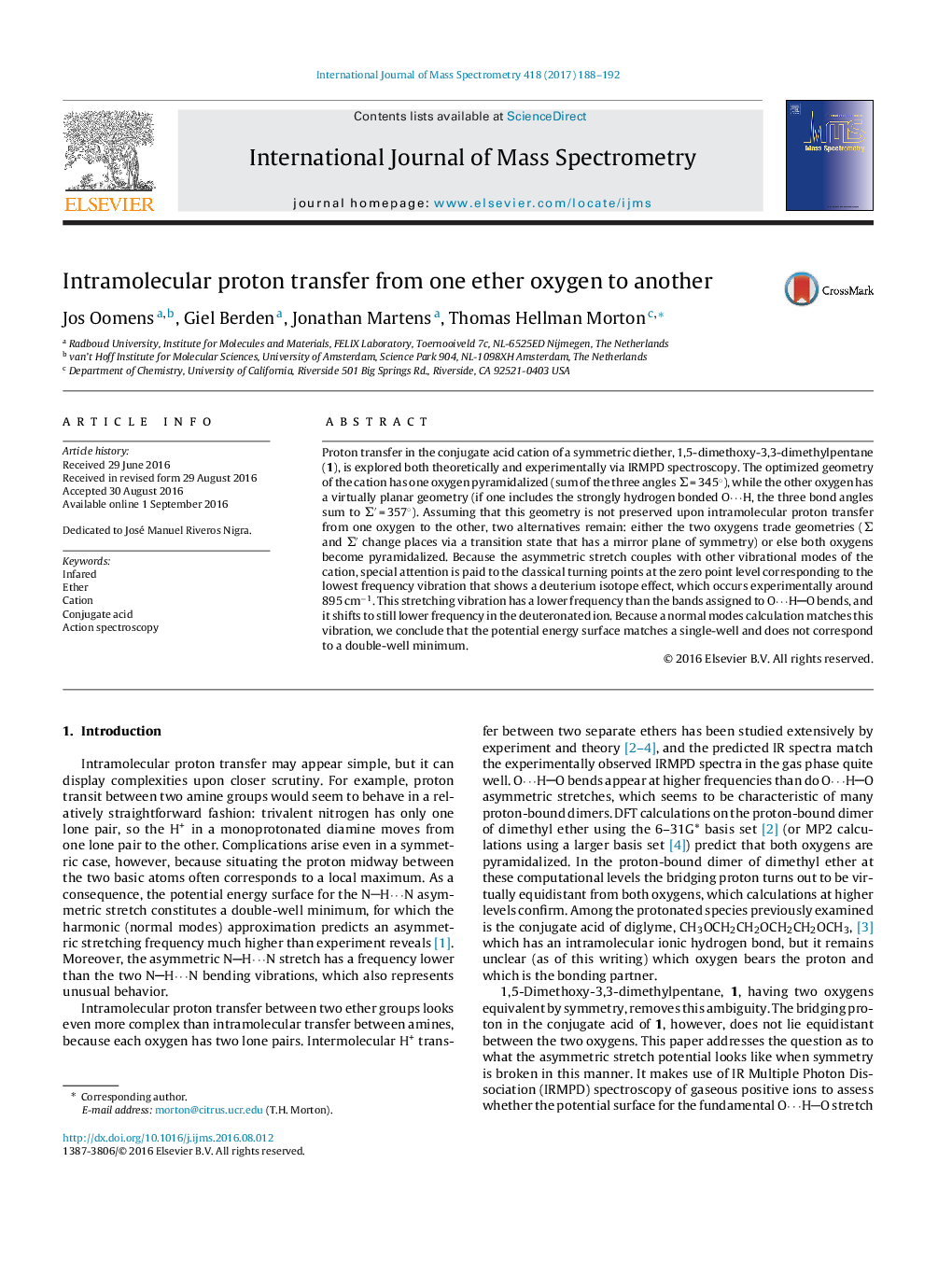| Article ID | Journal | Published Year | Pages | File Type |
|---|---|---|---|---|
| 5134233 | International Journal of Mass Spectrometry | 2017 | 5 Pages |
Proton transfer in the conjugate acid cation of a symmetric diether, 1,5-dimethoxy-3,3-dimethylpentane (1), is explored both theoretically and experimentally via IRMPD spectroscopy. The optimized geometry of the cation has one oxygen pyramidalized (sum of the three angles Σ = 345°), while the other oxygen has a virtually planar geometry (if one includes the strongly hydrogen bonded Oâ¯H, the three bond angles sum to Σâ²Â = 357°). Assuming that this geometry is not preserved upon intramolecular proton transfer from one oxygen to the other, two alternatives remain: either the two oxygens trade geometries (Σ and ΣⲠchange places via a transition state that has a mirror plane of symmetry) or else both oxygens become pyramidalized. Because the asymmetric stretch couples with other vibrational modes of the cation, special attention is paid to the classical turning points at the zero point level corresponding to the lowest frequency vibration that shows a deuterium isotope effect, which occurs experimentally around 895 cmâ1. This stretching vibration has a lower frequency than the bands assigned to Oâ¯HO bends, and it shifts to still lower frequency in the deuteronated ion. Because a normal modes calculation matches this vibration, we conclude that the potential energy surface matches a single-well and does not correspond to a double-well minimum.
